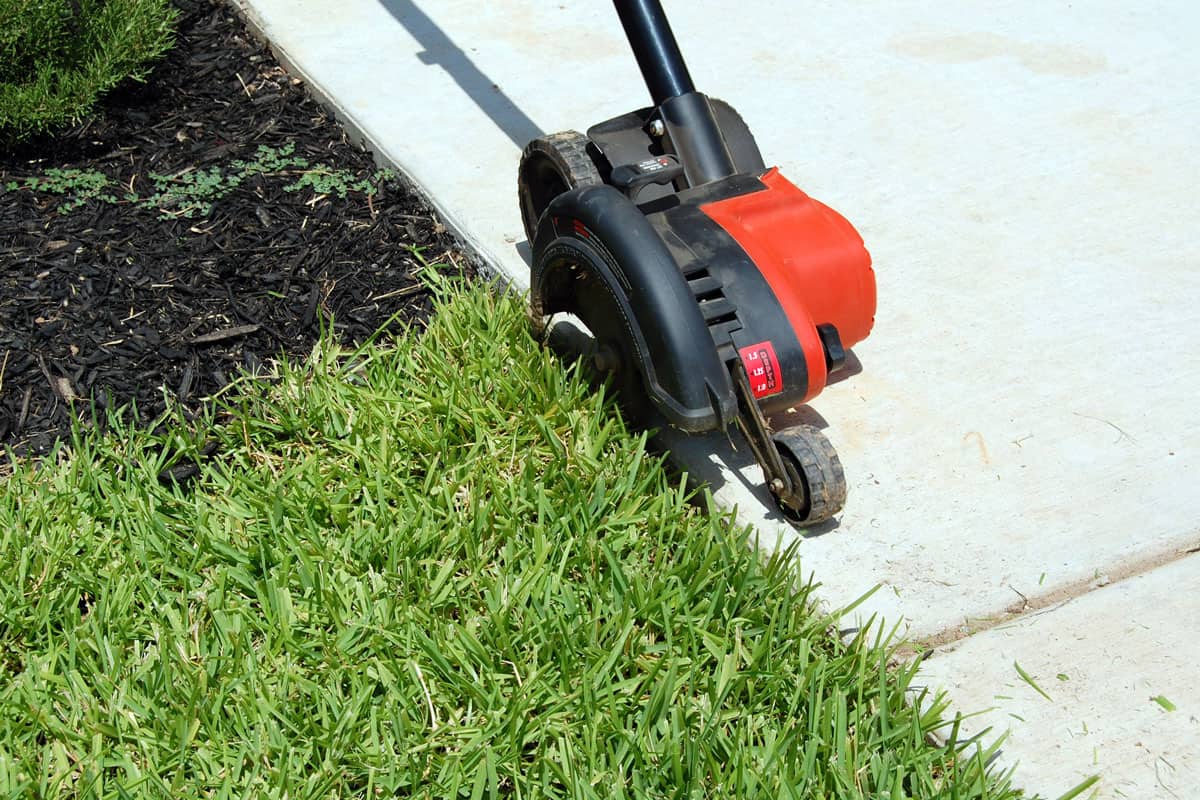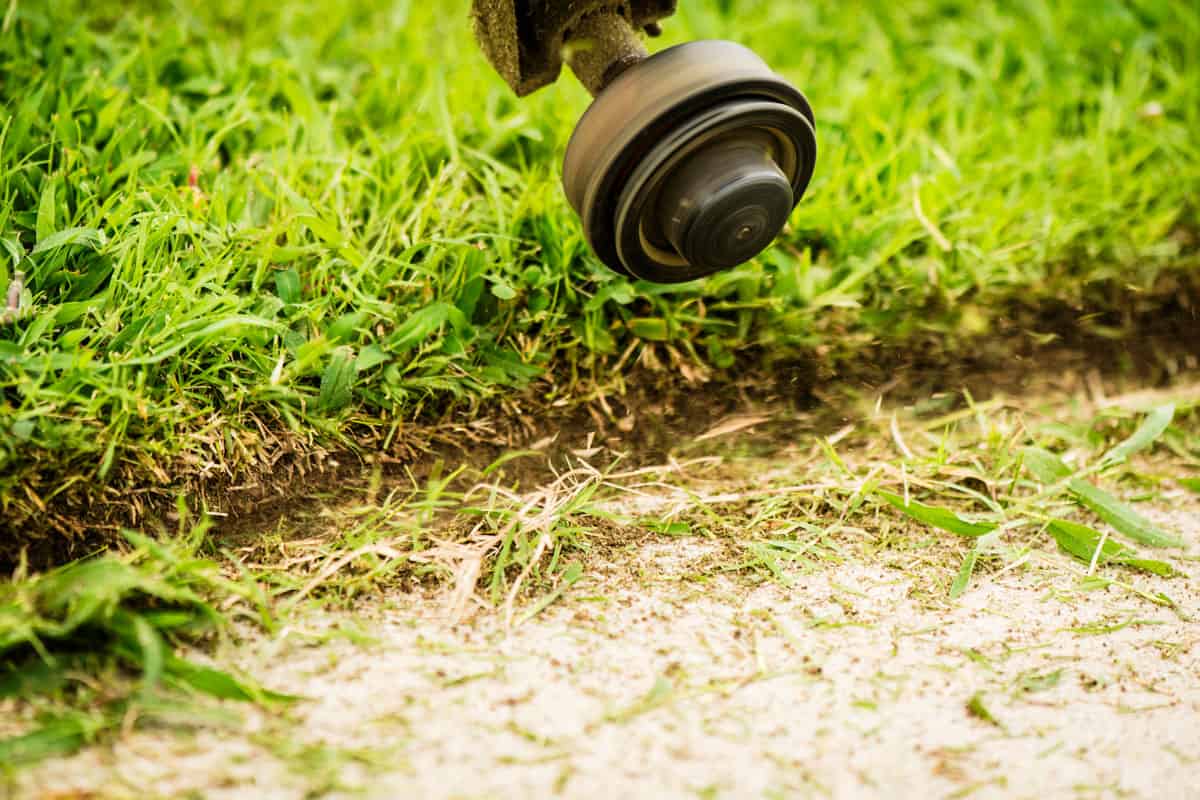Would you like to know how to use a Ryobi edger? Well, we have researched this topic and have the answers for you. It's vital to understand how to use a Ryobi edger to ensure maximum efficiency when using it.
To use a Ryobi edger, follow these steps in order:
- Fill the engine with gas or insert a charged battery.
- Turn on the Ryobi edger.
- Apply throttle and trace the edge of your lawn.
In this article, we will talk more about how to use a Ryobi edger. We will also learn the answers to other interesting related questions, such as is a Ryobi edger or weedeater better, and why won't my Ryobi edger start? Keep reading to learn more.
![Domestic garden strimmer - differential focus sharpness on trigger, How To Use A Ryobi Edger [Step By Step Guide]](https://gardentabs.com/wp-content/uploads/2022/10/How-To-Use-A-Ryobi-Edger-Step-By-Step-Guide.jpg)
How To Use A Ryobi Edger [Step-By-Step Guide]
Depending on whether your Ryobi edger is electric or gas, there will be slightly varying steps. Here is a step-by-step guide on how to use a Ryobi edger:
1. A Power Sorce

The first step to using a Ryobi Edger is securing a power source. If you are using a gas Ryobi edger, then fill the gas tank with regular gas. You will also want to ensure the oil reservoir is filled.
If you are using an electric edger, you will need to be plugged into an extension cord. There are also cordless models that only require batteries.
2. Turning On The Edger

When turning on a Ryobi Edger, you will need different steps depending on whether it's a gas or electric model. With gas models, you must first turn the edger to choke. When the edger is set to choke, it allows a high gas concentration into the combustion chamber, which helps start the engine.
Once you have set the edger to choke, pull the start cord a few times until you hear the engine turn over. The engine turning over indicates that the machine is primed to start.
Next, turn off the choke and pull the start cord, and the engine should fire right up. If the edger doesn't start, you may need to repeat choking the edger to start the engine.
3. Tracing The Edge Of Your Lawn

Now that your Ryobi edger is started, it's time to use it to edge your lawn. While applying the throttle, trace the edge of your lawn so that the cutting edge is within one inch of the edge of your lawn. The blade may kick back if you get too close to the sidewalk's edge, so be cautious.
It's also vital not to drift too far from the edge of your lawn to avoid cutting groves in it. It's best to keep your cut as straight as possible while edging to provide the best-looking cut.
Is A Ryobi Edger Or Weedeater Better?
Whether a Ryobi edger or weedeater is best for the job will depend on what you need edged and when the last time it was edged. Let's look at both Ryobi edgers and weedeater to see where they excel and where they have drawbacks.
Ryobi Edger

The Ryobi edger is excellent at establishing well-defined borders and edges for lawns and other yard areas. The tough metal blade of an edger can cut away soil and level dirt as it passes, making a properly shaped edge.
One drawback to edgers is how heavy they are. While an edger is easy to roll along the ground, it isn't nearly as light as a string-fed weedeater. The heavy head means it takes a little longer to edge a lawn with an edger.
Ryobi Weedeater

The Ryobi weedeater is lightweight and can be used to edge a lawn quickly. The versatility of weedeaters also allows you to cut down tall grass easily.
One drawback to a weedeater is needing to refill the head with string. A weedeater also has a more challenging time cutting through large amounts of dirt overhanging the edge of a lawn.
Conclusion
A Ryobi edger is best for establishing new edges or cutting overgrown edges. The improved speed of a Ryobi weedeater makes it best for maintaining an edge that an edger has already established.
Why Won't My Ryobi Edger Start?
There are a few common reasons your Ryobi edger won't start. Let's look at these common reasons your Ryobi edger won't start and learn how to identify and remedy them.
Clogged Air Filter
One reason your Ryobi edger may not start is a clogged air filter. If the air filter is clogged, then the engine won't be able to get enough oxygen to maintain combustion.
One way to tell if you have a clogged air filter is if the engine will start and turn off after a second. You can also see if removing the air filter allows the engine to stay on; if it does, it's most likely your air filter needs to be cleaned.
To clean the air filter, run warm water and soap through it and rub the oil off with your fingers. Next, allow the air filter to dry before reinserting it into your edger.
If you don't allow the air filter to dry before starting the engine, the excess water can prevent your engine from starting or, even worse, cause your engine to hydro lock. If your engine hydro locks, then it will no longer function and will need to be replaced.
Faulty Spark Plug
If your Ryobi edger has a faulty spark plug, you won't be able to get the engine to turn over, no matter how many times you pull the start cord.
While sometimes your spark plug has died, other times it merely has soot built up and can't create a good spark. You can sometimes take a wire brush and swipe the end of the spark plug a few times to help make a better connection.
If the wire brush doesn't work, you must remove and replace your spark plug. When you pull out the spark plug, if it is faulty, you will often see scorch marks on its connectors.
Reinsert a new spark plug, and your Ryobi edger should start.
Flooded With Gasoline
Another reason your Ryobi edger may not start is that it's flooded with gasoline. If, when starting the edger, you either pull the cord with the choke on too many times, overuse the primer, or turn the engine upside down, you may flood the engine.
When the engine is flooded, there is too much gasoline in the combustion chamber to sustain combustion. The solution is to wait for the gas to evaporate. It can take 5 to 10 minutes for the gasoline to evaporate enough for the engine to be started.
You can also speed up the process by removing the air filter. Often when the edger is tipped upside down, the air filter becomes soaked with gas, and removing it and shaking out the gas can significantly reduce how long the engine is flooded.
Too Cold Outside
It can be difficult to start all combustion engines when it's cold outside. The reason it's challenging to start combustion engines in the cold is that the internal oil in the engine becomes thick, and its resistance to movement increases the energy needed to turn the engine over.
If it takes too much energy to move the oil, the engine will quickly stall. The best way to get a Ryobi edger started when it's cold is to pull the start cord while the choke is on and then pull the start cord with the choke off. This will increase gas in the combustion chamber and ignite it, allowing the engine to turn over a few times.
Each time you repeat the process, the engine warms slightly, and the oil becomes less viscous. After repeating this process a few times, the engine will be warm enough to stay on.
You can try ether starting fluid if you still have trouble starting your Ryobi edger in the cold. Ether starting fluid can be sprayed directly onto the oil filter of your Ryobi edger and used in place of setting the device to choke.
Ether is so combustible that it helps turn the engine over and heat it faster than just choking it. If you want to start your Ryobi edger in even the coldest environments, then here are two of the best ether starter fluids available on Amazon.
STA-BIL Starting Fluid
You can find this product here on Amazon.
Penray Starting Fluid
You can find this product here on Amazon.
Final Thoughts

This article taught us how to use gas and electric Ryobi edgers. We also learned that while a Ryobi edger is better at establishing an edge, a Ryobi weedeater is better at maintaining it.
Remember, if you clean a Ryobi edger's air filter with water, ensure it's dry before reinserting it to avoid damaging the engine.
We hope you enjoyed this article. If you want to learn more, check out some of these other posts:
Can You Edge Wet Grass? Should You?
Can You Use An Edger Along A Fence [Without Causing Damage]?


